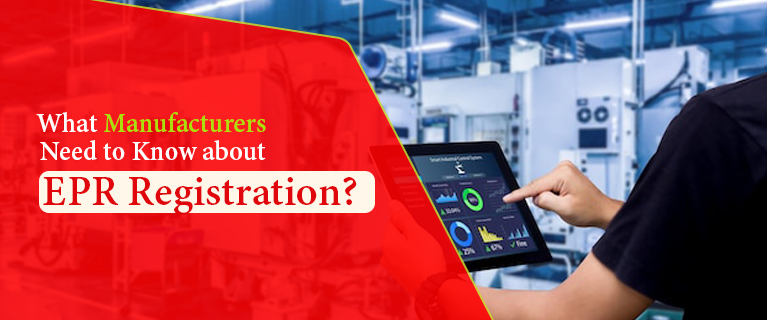How To Manage The Extended Producer Responsibility Registration Process?
In an age of increasing environmental awareness, businesses are under greater pressure to adopt sustainable practices. One critical aspect of this shift towards sustainability is the concept of Extended Producer Responsibility (EPR). EPR Registration is a policy approach that places the responsibility for managing the lifecycle of products, particularly in terms of recycling and disposal, squarely on the shoulders of manufacturers and producers. This guide aims to provide a comprehensive overview of how to effectively manage the Extended Producer Responsibility Registration process.
Understanding Extended Producer Responsibility
Extended Producer Responsibility is a principle that acknowledges the environmental impact of a product throughout its lifecycle, from production to disposal. It shifts the responsibility for proper management and disposal of products away from consumers and local authorities and places it on the manufacturers and producers. The goal is to encourage more sustainable practices, reduce waste, and promote recycling and recovery of materials.
Key Components of EPR Management:
1. Legal Compliance: Start by understanding the EPR regulations and laws in your region or country. Compliance is non-negotiable, and failing to meet these legal requirements can result in significant penalties.
2. Product Design and Sustainability: Embrace eco-design principles in your product development. This means considering the environmental impact from the initial design phase. Opt for materials that are easily recyclable or biodegradable.
3. Collection and Recycling Infrastructure: Establish a robust system for collecting and recycling your products. This often involves partnerships with recycling facilities, collection centers, and waste management companies.
4. Consumer Education: Educate your customers about responsible product disposal and the importance of recycling. Provide information on how to return or recycle the product once it reaches the end of its life.
5. Tracking and Reporting: Implement systems to track the lifecycle of your products, from production to disposal. Accurate record-keeping and reporting are essential for legal compliance and transparency.
Read Also This - The Popularity of EPR Registration in IndiaSteps to Manage EPR Registration Effectively:
1. Assessment and Planning: Begin by conducting a thorough assessment of your products and their environmental impact. Identify areas where you can reduce waste and improve recyclability. Create a comprehensive EPR Registration plan that outlines your goals, strategies, and timelines.
2. Product Redesign: Work with your product design and development teams to incorporate sustainable practices. Use materials that are easy to recycle and minimize packaging waste. Consider incorporating take-back programs into your products' design.
3. Compliance and Legal Obligations: Ensure you are well-versed in the EPR Registration regulations applicable to your industry and region. Keep abreast of any legal amendments. It is essential to abide by these rules in order to prevent legal problems.
4. Collection and Recycling Infrastructure: Establish partnerships with recycling and waste management organizations. Set up collection points where consumers can return your products at the end of their lifecycle. Ensure these facilities are easily accessible.
5. Consumer Engagement: Educate your customers about the importance of responsible disposal and recycling. Provide clear instructions on how to return or recycle your products. Engage in marketing and awareness campaigns to promote sustainability.
6. Reporting and Transparency: Implement systems to track the flow of your products and their impact on the environment. Regularly report your progress and efforts in EPR management. Transparency builds trust with consumers and regulators.
Challenges and Solutions:
Managing EPR Registration is not without its challenges. Companies may face resistance from consumers, incur higher costs, or struggle with logistics. To address these challenges:
Cost Efficiency: Invest in efficient recycling processes to minimize costs. Collaborate with other companies or industries to share recycling facilities.
Consumer Resistance: Educate consumers about the benefits of EPR Registration , not only for the environment but also for their communities. Emphasize the ease of use and advantages of recycling.
Complex Logistics: Develop a robust logistics strategy, which may include return collection points or partnering with existing waste management services.
Compliance Burden: Stay updated with EPR laws and regulations to ensure compliance. Consider working with experts in EPR management to navigate complex legal requirements.
Conclusion
Embracing Extended Producer Responsibility Registration is a pivotal step towards more sustainable business practices. By understanding its principles, complying with regulations, and effectively managing the process, companies can contribute to a greener and more environmentally responsible future while fostering trust and loyalty among consumers.




Comments
Post a Comment